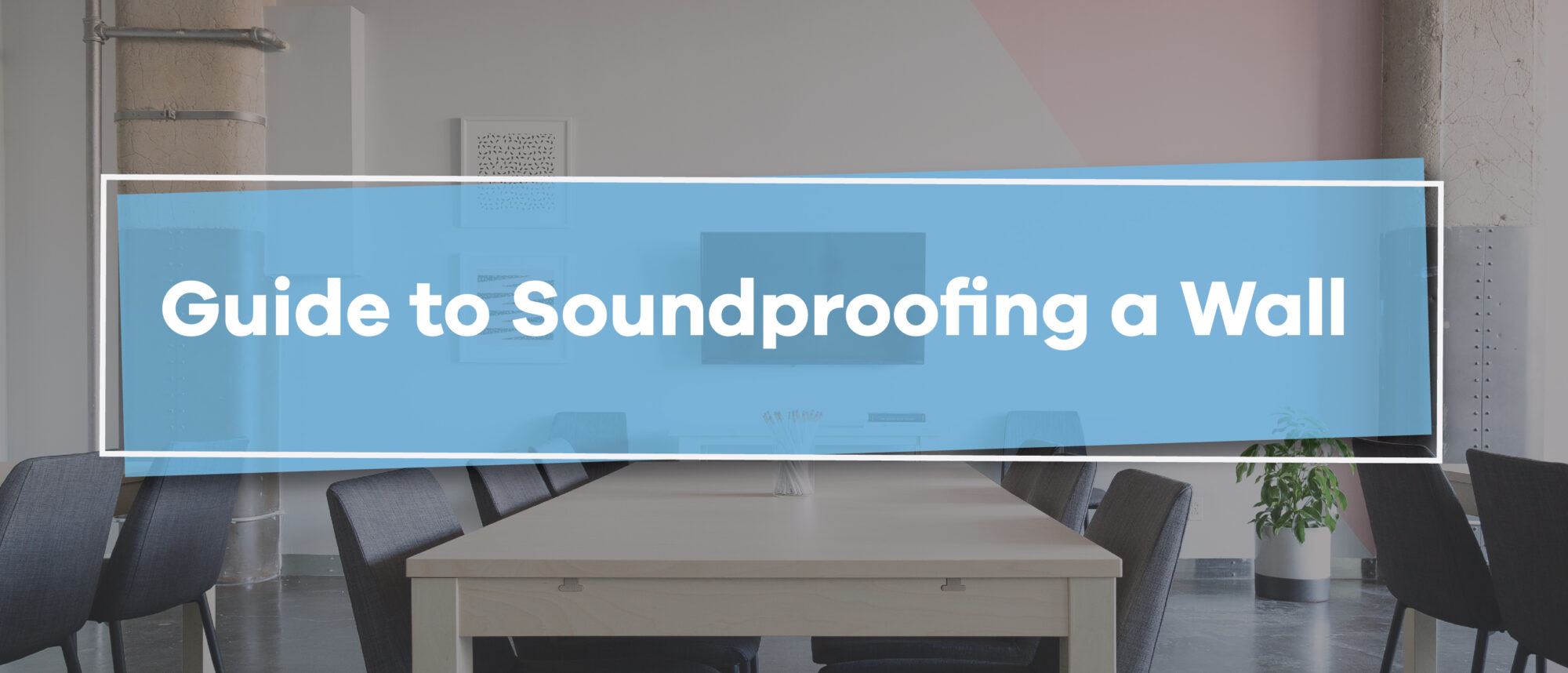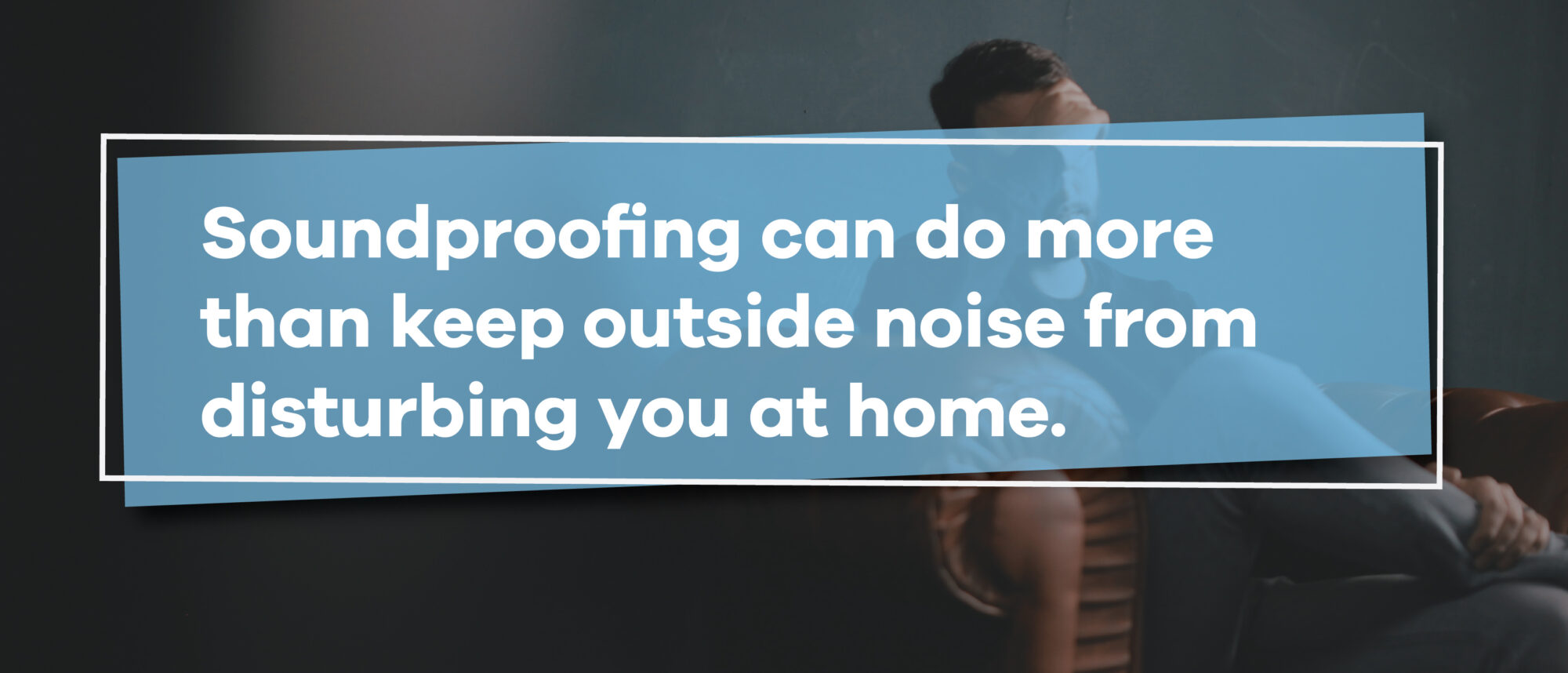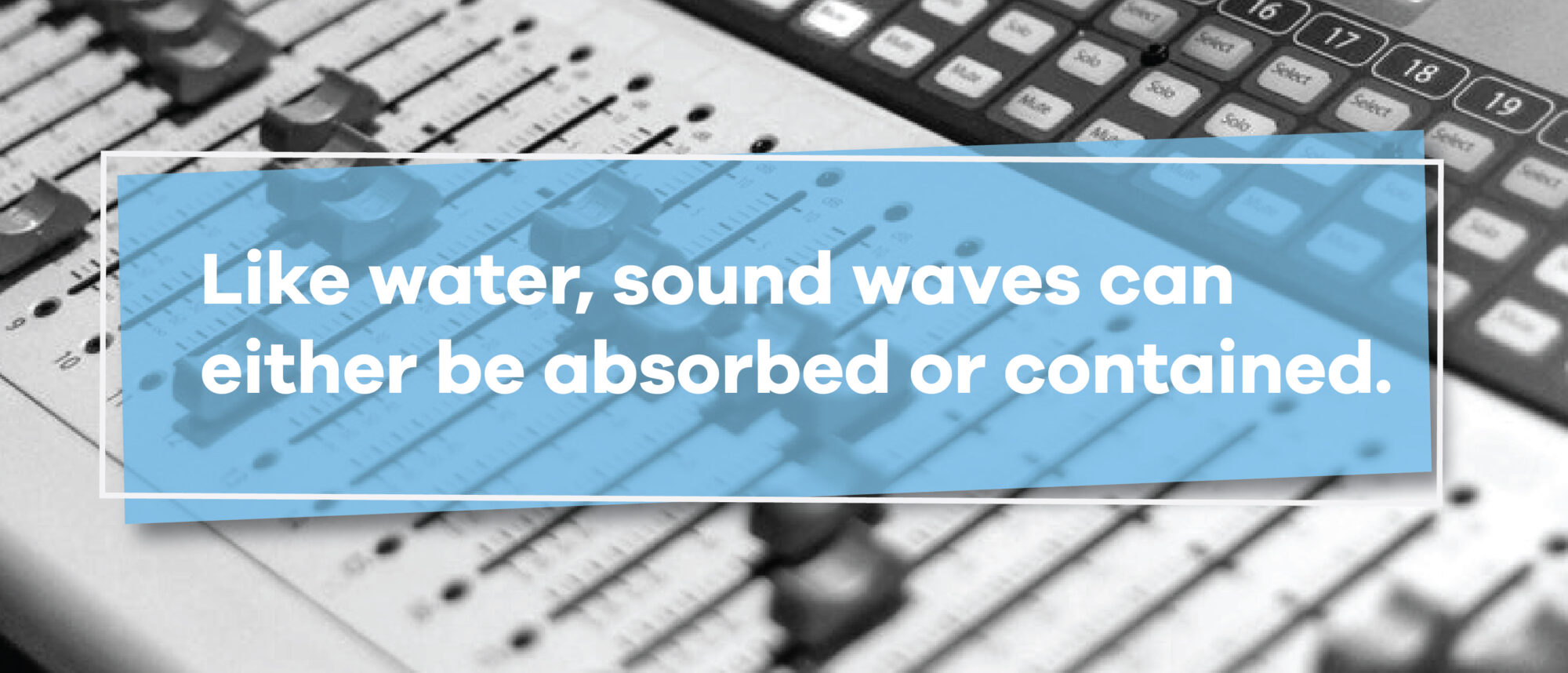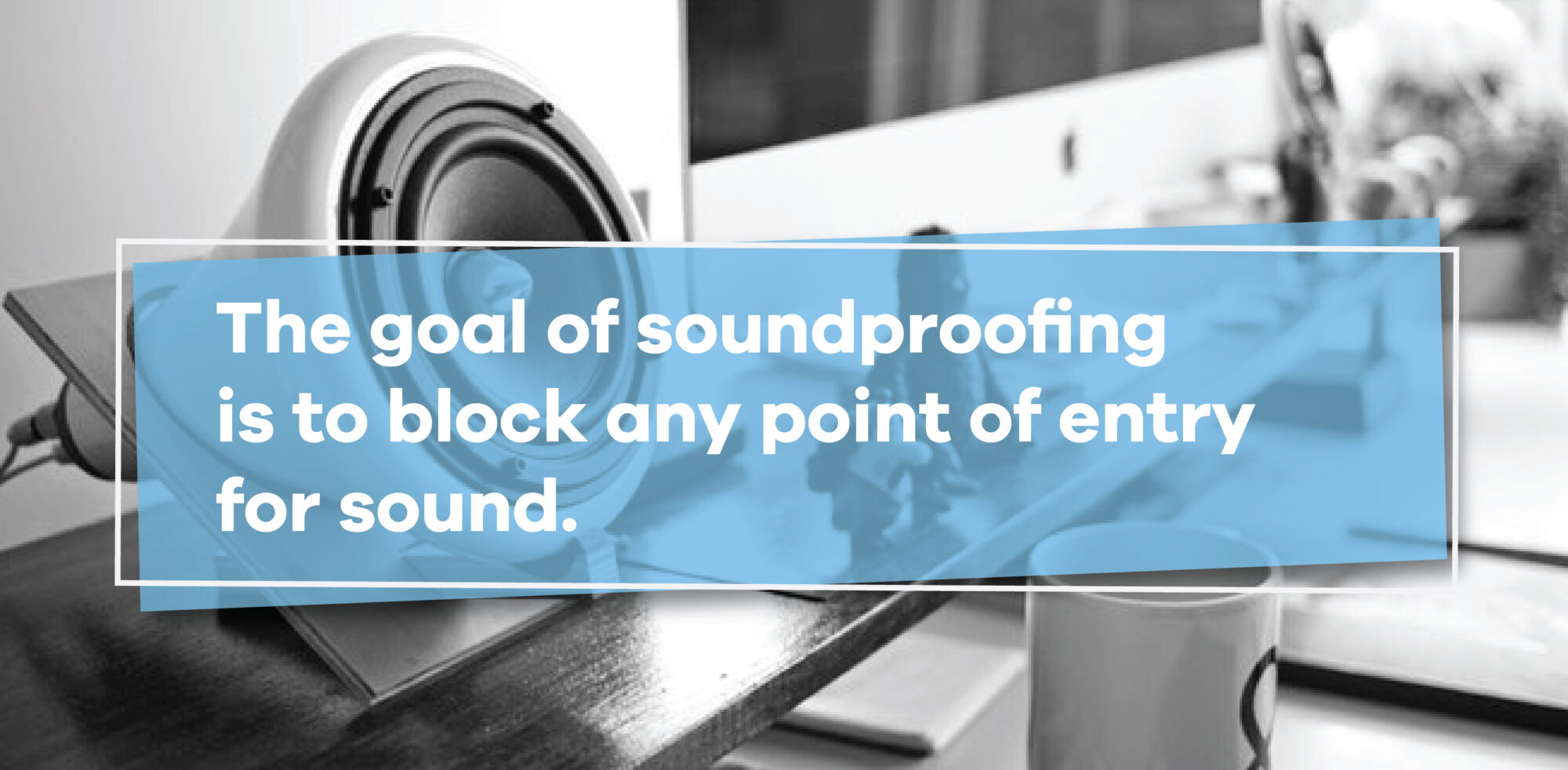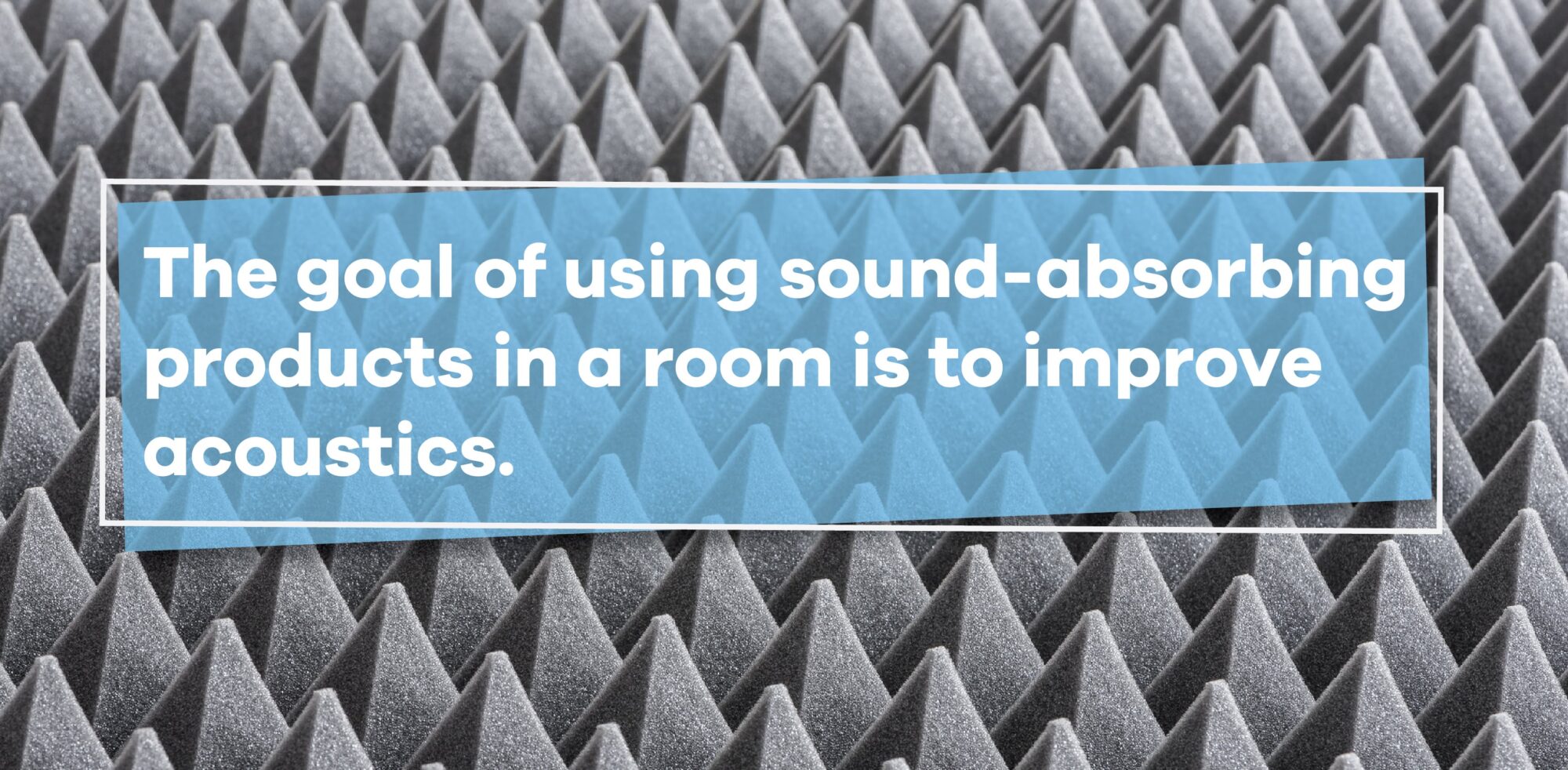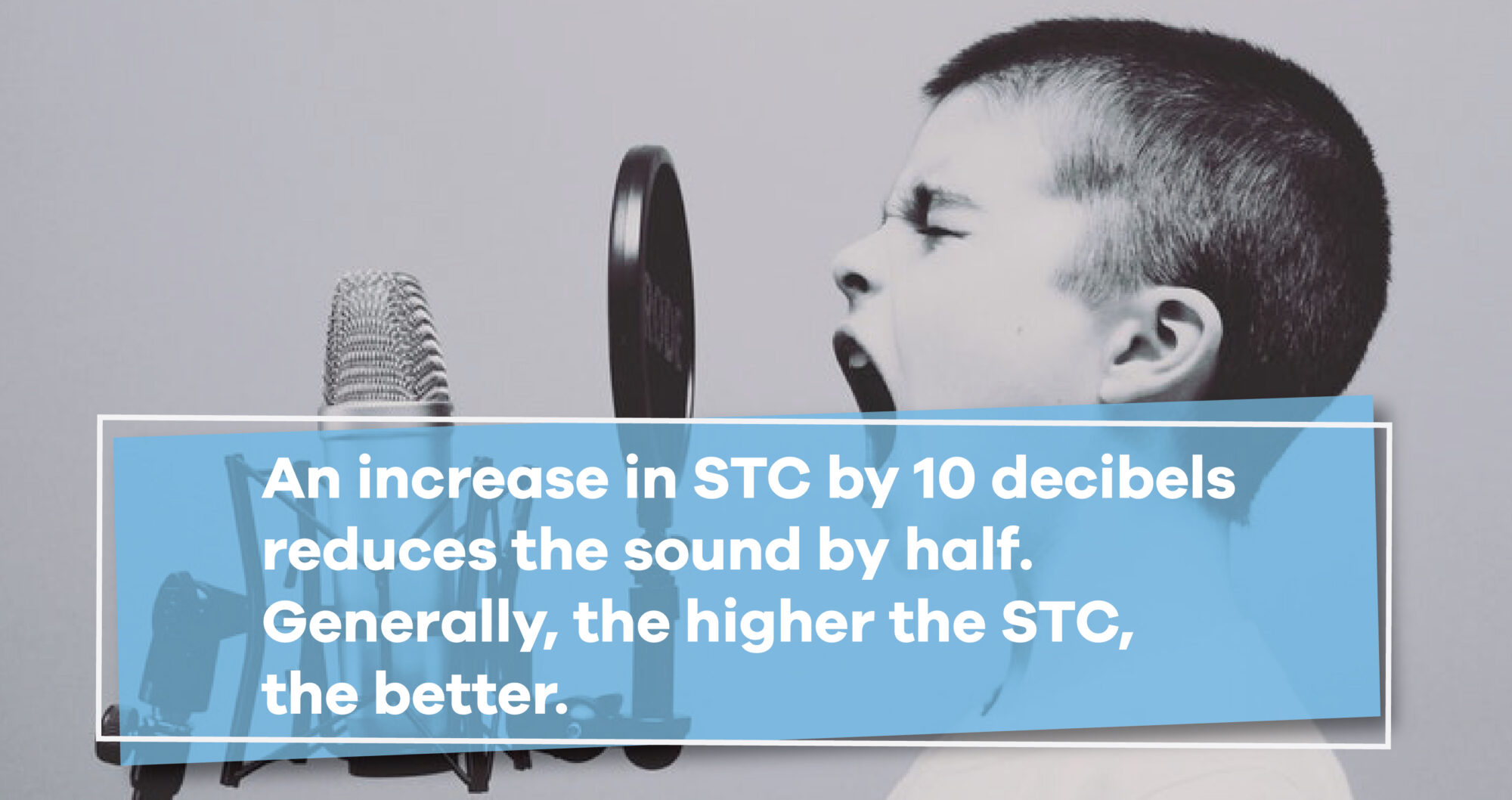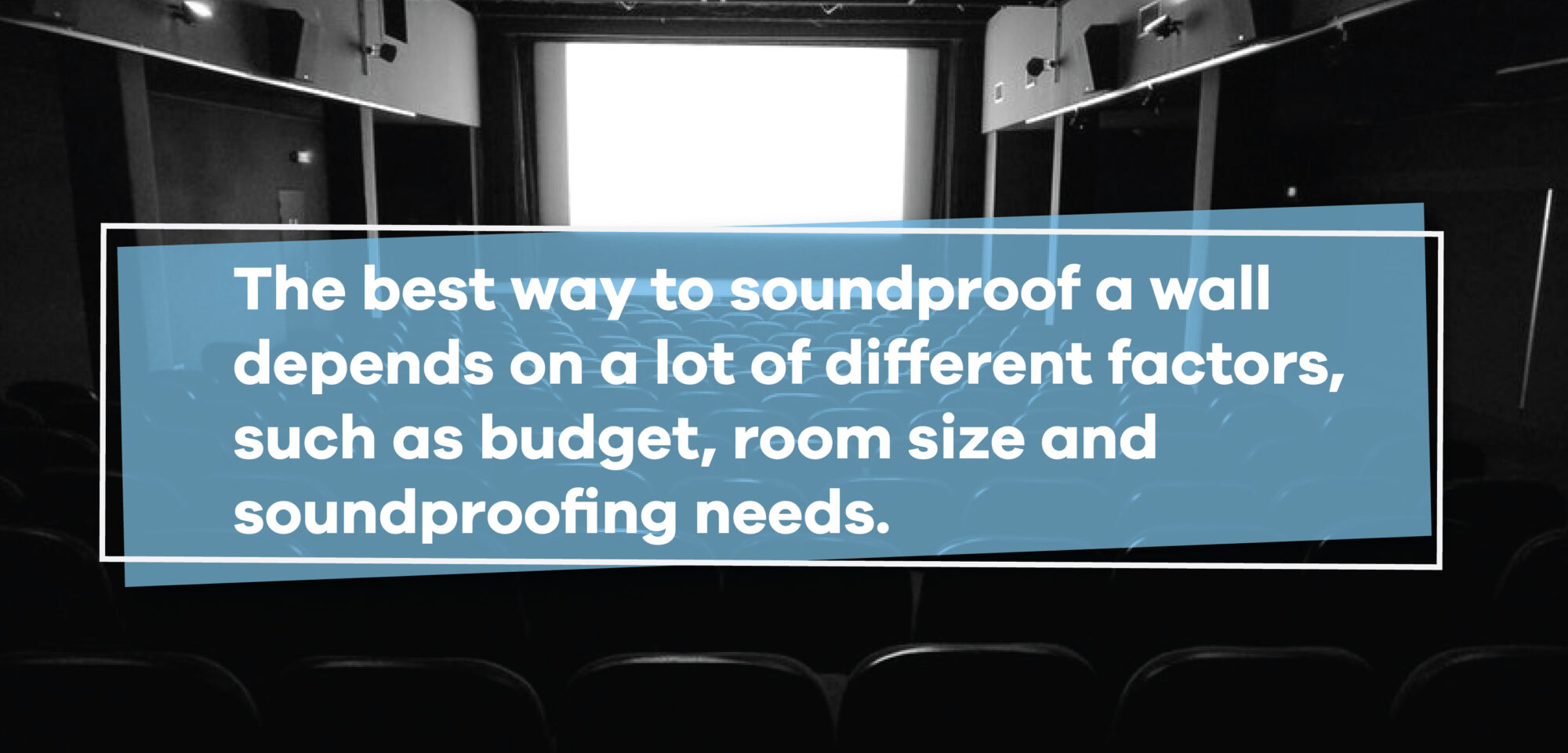How to Soundproof a Wall
Contents of this Guide:
- How Does Sound Work?
- When Do You Need to Use Sound-Reducing Methods?</span>
- Areas That Work Best for Soundproofing
- Some Materials Are Better Than Others
- When Do You Need to Employ Wall Sound-Absorbing Techniques
- Example Environments to Use Sound-Absorbing Materials Suggested Materials
- What Are STCs and Why Do They Matter?
- How Is STC Measured?
- What Are Wall Soundproofing Techniques?
- What Is the Best Way to Soundproof a Wall?
Guide to Soundproofing a Wall
If you’ve ever been disturbed by the noises coming from outside your home, you know the importance of soundproofing. You’ve probably spent time dreaming of ways you could make your home a peaceful oasis instead of susceptible to every outside noise — and you’ve probably wondered how to soundproof a wall or your overall space.
The good news is that you can improve your home environment with soundproofing, especially soundproof walls.
While you may need to work with existing walls, new construction or even a rental space where you can’t install anything permanently, this guide goes into detail on how to soundproof all those spaces, what you should expect and what materials to purchase.
At Soundproof Cow, we think you should know how soundproofing walls work and how you can get the best results. In addition to helping you learn how to soundproof walls, we’ll also discuss the differences between sound absorbing and soundproofing. Trust us — it matters.
To make sure we’ve covered everything, we also included a few soundproofing myths that need to mooove over for the truth. There’s a time and place for foam egg cartons — but it’s not on your walls as a DIY soundproofing method because it doesn’t work.
Soundproofing Isn’t Just About Keeping Noise Out
Soundproofing can be more than keeping outside noise from disturbing you at home. You may want to soundproof your space to reduce echo in the room or improve the acoustics. Enjoying your home theater, recording your own music or taking conference calls are all instances when echo can be annoying. Another situation is reducing noise between a shared wall to improve privacy.
By properly soundproofing your space, you can eliminate echo and improve the sound quality in your home. You can also increase privacy between rooms. This may be as simple as hanging up some acoustic panels, or it may require installing an entire soundproofing system. The options are endless, and we have solutions for almost every space.
We hope this guide is a one-stop resource for you as you begin soundproofing your home or space. Our website contains other valuable information and tips you may find useful as well. If you need more information about soundproofing your space or want personalized help, contact us today.
If you’re excited about soundproofing and eager to learn more, you can also request your free acoustic analysis in a few quick steps.
Table of Contents
Chapter 1: The Basics
How Does Sound Work?
Before we tackle how to soundproof your walls, let’s review how sound works. To understand sound, try to think of it as water. Vibrating objects produce sound waves, and sound waves ripple from the vibrating source. Like water, sound waves can either be absorbed or contained. The more distance there is from the sound source, the lower the intensity of the sound.
Sometimes, distance isn’t always possible to reduce the intensity of a sound, though. We live in houses or apartments where we share rooms with others. At work, we share office spaces or work areas. There isn’t always a ton of room for sound to travel without being heard. For example, maybe you want to keep noise out of your home office, but you live near a busy construction site. You can’t control the outside environment, but you can try to control how that outside sound impacts the inside of your home or workspace. Sometimes it’s a matter of implementing a few sound-reducing techniques.
Sound is also like light in that it can be reflected, refracted and diffracted. Sound is constantly reflecting off different surfaces, but we usually can’t notice. When two identical sounds reach our ears very quickly, we can’t tell them apart. However, when sounds are heard separately, you will experience what is known as an echo. This is where porous sound-absorbing materials can really come in handy.
Soundproofing materials, on the other hand, capture sound waves and prevent them from traveling elsewhere. For maximum soundproofing, it’s best to use techniques that both block and absorb sound.
When Do You Need to Use Sound-Reducing Methods?
In general, you’ll want to use soundproofing products when the sound is from a source you can’t control — either inside or outside your home or space. You’ll want to consider wall soundproofing methods when:
1. Noise Is Entering From Outside
Do your neighbors hold weekday parties until 2 a.m., or do you live next door to a teenage garage band? In either of these situations, you’d probably benefit greatly from soundproofing your walls.
Soundproofing keeps noise out. Multiple soundproofing layers will work best at blocking noise, but less involved methods can also help reduce sound to hard-to-hear levels. So, if your neighbor regularly hosts a karaoke party on Tuesday nights, have no fear. You don’t need to call your real estate agent just yet.
2. You Need to Keep Noise From Traveling Outside
The goal of soundproofing is to block any point of entry or exit for sound. These sound portals can be anything from tiny holes in the walls to the gap under the front door. Some soundproofing products are built to seal leaks, cracks and gaps, and keep sound from seeping in — or from going out.
Areas That Work Best for Soundproofing
It’s important to identify the direction the noise is coming from, so you can soundproof a specific area.
Doors, for example, are a major culprit when it comes to letting in noise because of the gaps that surround them. If you’re often distracted by hallway activity outside your apartment door or can hear everything and feel cold air from a gap under your front door, for example, it’s a good idea to soundproof your door with a seal and a door sweep.
In addition to soundproofing options for entry doors, you might want to soundproof rooms, such as:
• Your bedroom
• A nursery
• The living room
• Your home office or workspace
• A band practice space or recording studio
• A classroom
• A library
• Any room where you wish for peace, quiet and privacy
Some Materials Are Better Than Others
We’ll show you how to soundproof a room soon, but here are our top five recommended soundproofing materials:
• Fiberglass composites
• Foam composites
• Flooring underlayments
• Soundproofing insulation
• Sound isolation systems
When Do You Need to Employ Wall Sound-Absorbing Techniques
Soundproofing and sound absorbing usually go hand in hand, but here are instances where sound absorption might be the only goal:
1. You Want to Dampen Outside Sound
Typically, the goal of using sound-absorbing products in a room is to improve acoustics. On their own, sound-absorbing products won’t necessarily keep sound out, but they might help prevent outside sound from bouncing around the room and being a nuisance.
2. You Want to Reduce Echo and Improve Acoustics
A musician would sound better strumming their guitar in a furnished room than a big, open empty room, for example. Furnishings, like a soft couch with pillows, help absorb sound and prevent echoing.
Or perhaps you finally have the money to turn your basement into a home theater. Imagine watching a movie full of explosions in a large concrete room (your basement) without any sound-absorbing materials. Unless the volume is set very low, that movie-watching experience might feel too close for comfort.
Example Environments to Use Sound-Absorbing Materials
Though sound-absorbing materials make nice additions to any space, these environments especially benefit from sound-absorbing products:
• Movie theaters
• Recording studios
• Classrooms
• Lecture halls
• Gyms
• Workshops
• Garages
Suggested Materials
Simply adding more furniture and carpet can help deaden sound, but it isn’t enough for quality soundproofing, especially in large spaces. Some of our recommended sound-absorbing materials include:
• Acoustic fiberglass
• Acoustic foam
• Acoustic partitions
• Hanging baffles
• Water-resistant panels
What Are STCs and Why Do They Matter?
STC stands for sound transmission class, and it is a method of measuring sound. A higher STC number is better because it means you are less likely to hear sound from an outside source.
How Is STC Measured?
We already talked about how sound is like water and travels in waves from a vibrating object, right? Well, more specifically, the vibration is a fluctuation of pressure. The pressure can vary in amplitude or volume and frequency or pitch. Volume is measured in decibels, and sound frequency is measured in hertz. Pitch and volume can change as they travel through and come in contact with different materials. STC rates the decibel reduction that a noise blocker or absorber provides.
For instance, if noise is measured at say 60 decibels on one side of a wall, and it is measured at 40 decibels on the other side, the wall has an STC of 20. An increase in STC by 10 decibels reduces the sound by half.
Here are some examples of how STC rating relates to what we hear:
• A soundproofing material such as a wall or panel with an STC rating of 30-35 will allow us to hear most sentences clearly on the other side of the wall or panel.
• At 56-60, speech is barely audible, but loud music still perceptible.
• At 66-70, loud speech is inaudible, but loud music is heard faintly.
• At 71 or over, low frequency is still heard, like bass, but other noises are faint.
Low-frequency sounds are harder to block because they travel further than high-frequency sounds. However, each time you add a barrier that increases the STC by 10, you reduce the sound by 50 percent. You can see why quality barriers can make a huge difference in sound perception.
What Are Wall Soundproofing Techniques?
It might not be possible to keep sound out completely no matter what method you use, but the more attention you give to problem areas, the better results you’ll have.
For example, if you’re working on building a home recording studio, you’ll not only want to keep sound out by soundproofing the wall. You’ll also want to improve the acoustics within the room with sound-absorbing products. So, before you embark on a soundproofing journey, ask yourself what your goals are to make sure you cover every area.
Here are techniques that help create a soundproof room. They are especially effective when used together:
• Close gap and leaks: Sound easily leaks through windows, doors and wall cracks. Also, consider pipes and ducts as passageways for sound. Consider soundproofing these elements if noise seems to get in from the outside a lot.
• Reduce vibration: Add materials like heavy walls or doors that don’t easily vibrate to reduce sound. Materials that absorb vibration like foam or fiberglass also work well.
• Decoupling: This technique can be thought of as building a room inside a room. A wall is built in front of the larger wall, and insulating sound-absorbing materials are sandwiched between the two walls.
• Use soft furnishings: For better sound quality in a room, aim to absorb sound rather than reflect it. Soft absorbent furnishings like rugs, plush furniture, wall tapestries and drapes can help.
With these techniques in mind, the general goals of soundproofing are to:
• Reduce vibrations
• Absorb sound
• Add mass to block sound
What Is the Best Way to Soundproof a Wall?
The best way to soundproof a wall depends on many different factors, such as your budget, room size and soundproofing needs. If you only wish to block out the occasional dump truck passing beneath your bedroom window, you might just want to seal the window and hang heavy drapes. On the contrary, if you’re building a library next to a zoo, it might be worth investing more time and money to reach your soundproofing goals.
It’s important to think about room size, too. It might be hard to use the decoupling technique in a micro apartment, but it might be the perfect choice for a home office the size of a three-car garage.
In the next chapter, we’ll look at materials you can use to soundproof your walls and different soundproofing methods to help you decide what’ll work best for you, your space and your budget.
Chapter 2: Soundproofing Materials



